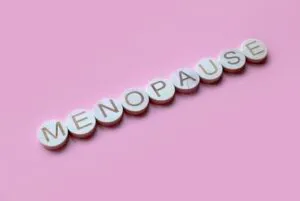 Aging poses changes for men and women. Imbalanced hormones can significantly affect your quality of life. It is common to assume that these symptoms are just the expected signs of aging and that nothing can be done to address it. The good news is, there are options.
Aging poses changes for men and women. Imbalanced hormones can significantly affect your quality of life. It is common to assume that these symptoms are just the expected signs of aging and that nothing can be done to address it. The good news is, there are options.
When estrogen and progesterone levels become deficient, menopause or perimenopause begins, marking the end of childbearing.
For women, menopause can begin as early as their 40s and can affect all facets of life. The most notable symptoms of menopause are hot flashes, night sweats, and low sex drive, to name a few. However, menopausal symptoms are person-specific and can vary across the board. Many women will note that their friends and family notice a shift in mood, anxiety, or irritability. It is common to become forgetful or experience ‘brain fog’, along with a lack of sleep. Experiencing these symptoms affect interpersonal relationships and even career. As a lack of sleep presents itself, it isn’t easy to function during the day, especially for activities like going to the gym and keeping active. Some women describe this as a snowball effect; if you can’t work out, you gain weight and risk becoming unhealthy. Gaining weight can result in low self-esteem, and so on.
Women are not the only ones dealing with low hormones in life; men can experience severe changes and symptoms as well. When men’s bodies stop producing sufficient testosterone, they may notice a loss of sex drive, inability to sustain an erection, loss of muscle tone, fatigue, to name a few.
The excellent news is bioidentical hormone replacement therapy (BHRT) can help both men and women restore their vitality. BHRT is a well documented and accepted way to replenish hormone levels by using plant-based pellets that are compounded specifically for you, under strict supervision of State Boards of Pharmacy. You will need to begin by finding a clinic that specializes in BHRT and making an appointment for a consultation. Be prepared to discuss your symptoms, healthy history, and make sure to bring an up to date list of any medications that you take, including supplements and over the counter medications. A complete record of this information is vital for the practitioner to evaluate and ensure proper dosing of your hormones.
It is essential to discuss your symptoms thoroughly. A journal is an excellent way to keep up with the changes in your body, as it is easy to lose track of them. Once your blood is drawn, it is sent away to a lab to analyze the levels of hormones. After your practitioner evaluates the report from the lab, an appointment will be made for you to come back in to discuss your treatment plan, review the expected benefits and potential side effects. Your hormone pellets will be ordered for your specific needs, as there is no one size fits all approach to hormone replacement.
The next step is a small area on your hip is prepped and numbed, and then the pellets are inserted. Most patients report little to no discomfort and can carry on with their typical day for the most part. You will notice soreness over the next day or so, similar to a bruise. You will be given a follow-up appointment for another lab draw to help establish your baseline.
It will take a few months to feel the benefits of BHRT. Keep in mind, you experienced a depletion in hormones over years, so no treatment will become effective immediately. It is vital to keep your appointments and a close track of your symptom relief along with any other changes so you can accurately report your progress at your follow up visits.






